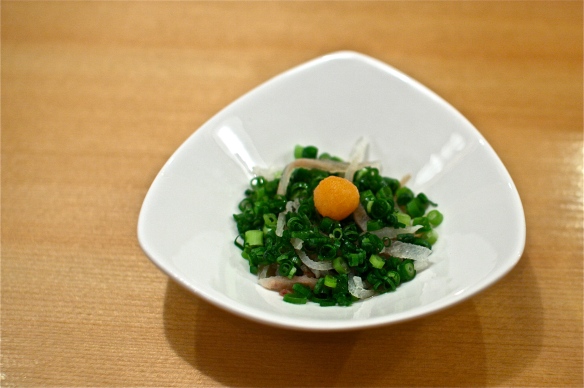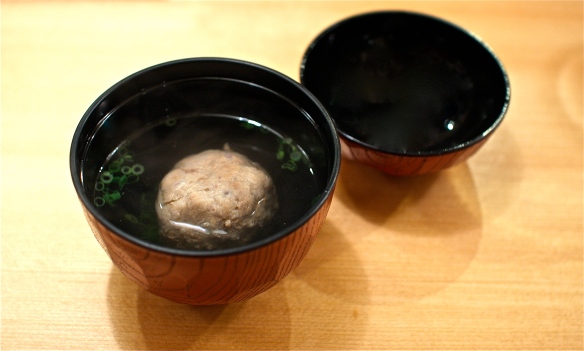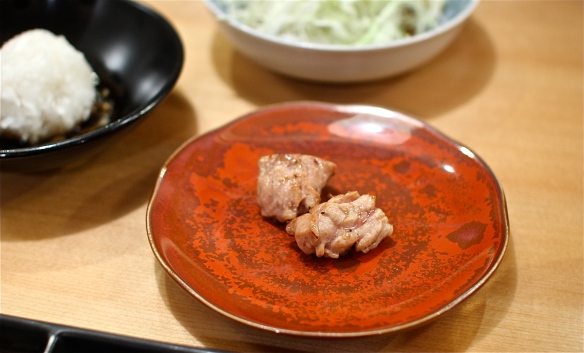Louis Vuitton, Gucci and Chanel are arguably the top 3 powerhouse fashion brands that have been dressing, tressing and decorating beautiful women from head to toe for decades. Their easily recognizable logos are splashed all over bags and clothes on international fashion runways and magazine covers. Similarly, in the beef realm we have Kobe, Matsuzaka and Yonezawa, the 3 famous sandai wagyu brands that reign supreme in the bovine world with their unique method of breeding and exquisite marbled meat. These respective haute couture and haute cuisine trios are international icons with A-list star status.
And then…there’s Hermès. Incomparable in craftsmanship, each carefully hand-constructed by dedicated artisans, ultra luxurious and a timeless classic. The illustrious Birkin bag (a larger version of the Kelly), for one, is a fashion legend that is known to fetch up to $19K with a 6 year waiting list. Such is the Sanda gyu in the wagyu world, a more exclusive beef brand in a league of its own with only a handful of farmers who raise less than 1000 cattle per year. While Sanda gyu is served selectively at upscale steakhouses like Aragawa for a price that could buy an Hermès clutch, one can sample this highly prized beef at a more affordable restaurant in Tokyo called Sanda after its illustrious namesake.
The only catch is that you won’t be sinking your teeth into juicy cuts of sirloin and rib eye steak. Sanda restaurant, tucked in a quiet neighborhood behind the Tokyo Midtown Complex in Roppongi, only serves Sanda wagyu offals.  Every part of the glorious specimen of Japanese cow is treated with utmost respect and served elegantly in kaiseki style, elevating beef organs to a 1 Michelin star status. My first meal at Sanda 6 years ago, in the Akasaka location that has since closed, was a life-changing experience. Luscious cuts of cow blood vessels, intestines and reproductive organs opened my eyes to a whole new world of innards and showed me the path to offal nirvana. It was time for me to make my pilgrimage back to this holy shrine for an awakening of the senses and transcendence into offal enlightenment.
Every part of the glorious specimen of Japanese cow is treated with utmost respect and served elegantly in kaiseki style, elevating beef organs to a 1 Michelin star status. My first meal at Sanda 6 years ago, in the Akasaka location that has since closed, was a life-changing experience. Luscious cuts of cow blood vessels, intestines and reproductive organs opened my eyes to a whole new world of innards and showed me the path to offal nirvana. It was time for me to make my pilgrimage back to this holy shrine for an awakening of the senses and transcendence into offal enlightenment.
前菜:アキレス腱ポン酢
Due to the interesting selection of cuts, the chefs serve each course without an introduction. ‘Try it first, then I will tell you’ is their motto, as they watch each diner’s reactions with mischievous smiles. The restaurant blooms with conversation and laughter as playful exchanges between guests and chefs come naturally. The first course, for one, had me stumped. A dainty starter of soft semi-translucent strips with chopped scallions, spicy momiji oroshi grated daikon and ponzu sauce was all about texture- pliable with a subtle crunch, a pleasant elasticity and bounce against my teeth, all owing to the high collagen content of julienned Achilles tendon.
ハツモト中華風
Then came the hatsumoto, directly translating to ‘the root of the heart’, aka ascending aorta, the largest main artery that stems from the left ventricle of the heart to deliver oxygenated blood all throughout the body. Thick batonnets of aorta with the texture of semi-firm cheese and a mellow buttery savor were exceptionally delicious tossed with sesame oil, shaved Tokyo negi and togarashi chile, one of my favorite bites of the evening.
ハチノス胡麻和え
Another sensational hit from the tasting menu was the hachinosu honeycomb tripe, the second stomach of the cow, with its firm chewy texture and ever so delicate hint of wonderful gaminess, balanced by the creamy white sesame dressing that made the sake flow easily.
フワ辛子醤油
Sanda is quite possibly one of the only restaurants in the world to serve beef lung and do it so elegantly, showcasing its bold minerality and iron flavor in a simple preparation with soy sauce and Japanese karashi mustard. Referred to as fuwa by the chefs, taken from the onomatopoeia fuwa fuwa to describe something soft and fluffy, these pink cuts of pulmonary tissue were indeed spongy and light, juxtaposed against the delicate crunch of the cartilaginous bronchioles.
椀物:牛タン団子のスープ
The stand out course of the evening was the beef tongue and throat cartilage dango meatball soup, a densely packed yet soft flavorful meatball with finely chopped bits of crunchy cartilage for fun marvelous texture. The enticing aromas that wafted through my nares and the warmth of the delicate broth that seemed to spread down my esophagus straight through to my toes left me sipping this bowl of comfort in silence with a long lingering sigh of content on the finish.
刺身:レバーの刺身
Glistening crimson red slices of liver sashimi adorned with white sesame seeds and chopped scallions were creamy and silky like crème fraîche, surprisingly sweet with absolutely no iron flavor characteristic of this organ. A quick dip in salted sesame oil rendered these delightful segments even more slippery on the tongue, making for an intense session of culinary foreplay.
牛トロ寿司
Harami, commonly known as hanger steak from the cow’s diaphragm, was prepared as delectable sushi, one topped with wasabi and the other with Japanese karashi mustard for a side by side of eastern and western interpretations.
揚げ物:ミノの唐揚げ
As the chef placed this deep fried dish in front of me, I caught his look of challenge in eyes. ‘Guess which part of the cow this is,’ he seemed to say with his smiling eyes, as my taste buds pondered over this elastic piece in deep thought. Springy, pliable, but with added layers of juicy flavor through every successive bite, it was obvious that it was a part of the digestive tract. It was mino, the first stomach, deep fried with shishito pepper and dipped in sea salt and curry powder, a delicious morsel to complement our sake.
煮物:ほほ肉のシチュー
It seemed unfair to be served only 2 bites of Sanda’s breathtakingly delicious beef cheek stew, tender cuts of richly flavored meat braised in red wine long enough to melt its connective tissue layers into liquid umami. Having fallen under its hypnotic spell, I slurped the sauce down to its last drop with no shame, chasing this liquid gold down with a Japanese plum wine made from red wine infused plums.
焼き物:四種
For the grilled course, the chef presented the 4 beef selections of the evening. Plates of coarsely chopped daikon radish and finely chopped cabbage were served to enjoy with the fattier cuts of grilled meat, while 3 types of soy sauce (wasabi, garlic and ginger) were presented to use as dipping sauces.
膵臓
Pancreas was surprisingly light, lean and tender, reminding me of grilled chicken thighs, going well with the wasabi soy sauce.
ほほ肉
Thinly sliced beef cheeks had a little more texture and robustness, augmented by the zing of ginger soy sauce.
やん
A first for me, the next grilled course was called yan, the thick knobby portion of connective tissue between the 2nd and 3rd stomach of the cow. Definitely more chewy and dense, this morsel was all about flavor- the more one chews, the more flavors are extracted, until the jaw fatigues and cannot chew anymore.
ハラミ
Harami, the rear diaphragm, was unexpectedly fatty and juicy, turning into liquid fat at the first bite. Dipped in wasabi soy sauce, these were intensely rich bites that went well with the crispness of coarsely chopped daikon radish.
鍋:牛タンのしゃぶしゃぶ
4 perfect thin slices of Sanda beef tongue were presented across the counter for the final wagyu course, a shabu shabu.
ギアラ、しびれ
Wrapped around crisp stems of mizuna greens, the delicate slices of tongue were tender and delicious, but the star players in the ponzu dish were the bite sized servings of savory giara, the 4th stomach of the cow, and shibire, buttery sweetbreads/thymus glands that simply melted in my mouth.
〆:中華麺 デザート:黒胡麻アイスクリーム
Slurping ramen noodles in a light beef based broth, spiked with green onions and a generous sprinkling of coarse black pepper, followed by a simple dessert of dark black sesame ice cream, was the perfect way to end the inspirational meal of beef offals.
Only in Japan can such an experience be possible- a full course kaiseki of beef innards, expertly prepared and elegantly presented to be worthy of a Michelin star, for the quality of the Sanda wagyu brand naturally renders its innards at a similarly high quality. Not once did I feel like I was having entrails, waste products normally thrown to the hounds, for the freshness of the ingredients, the delicacy of the flavors and the beauty of simple plating elevated the dining experience to one of luxury and finesse. For a lavish adventure into organ meats, pay a visit to Sanda and allow the friendly welcoming staff to guide you into a whole new world of beef.
Sanda Wagyu Restaurant 4-5-9 Roppongi Minato-ku, Tokyo Japan 03-3423-2020
Random trivia: Cows ‘moo’ in English, but they make other sounds around the world.
Afrikaans: moe-moe Bengali: hamba Dutch: boeh French: meuh Hungarian: bú Korean: um-muuu Thai: maw maw





















